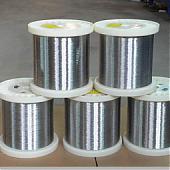Basic Requirements for Brazing Stainless SteelPosted by sanny111 on July 7th, 2015
Step One: Clean the Metal. Prior to entering the furnace, the metal must have residue, dirt, and coatings removed, including paint and rust. If the substances are left in place, they could oxidize, cause the metal to tarnish, and create a barrier between the base metal and the filler metal. Non-residue cleaning solutions are preferable for removing dirt and residue. Grinding may be necessary to remove rust and thick paint. Step Two: Achieve Proper Joint Clearance. The recommended joint clearance between pieces of base metal is.00015". This clearance allows the filler metal to distribute between the pieces by a capillary action. If the clearance is too wide or too narrow, the strength of the joint will suffer. The filler metal acts like glue, sealing the pieces tightly together. When this happens, the assembly may break under little pressure. Because the filler metal is not as strong as the base metal, the assembly may also break easily if too much filler solidifies between the work pieces. Step Three: Use the Proper Brazing Atmosphere. Brazing stainless steel requires a furnace atmosphere that contains no oxygen. If oxygen is present, the chromium in the metal oxidizes, tarnishes the surface, and weakens the joints. Therefore, the metal is treated in a continuous furnace that is designed for atmosphere control, or a vacuum furnace, which applies a vacuum to the furnace chamber to remove gases. Heat treating stainless steel is normally performed in an atmosphere of nitrogen, hydrogen, or a mixture of the two. Because the atmosphere is oxygen-free, the assembly does not require flux. Step Four: Clean the Metal Again. After quenching or cooling in the open air lowers the temperature of the assembly, it should be cleaned again to remove traces of oxide or debris that came from the furnace. This improves the shine of the metal. A basic, non-residual cleaning solution for stainless steel is normally sufficient for the second round of cleaning. Conclusion Brazing stainless steel has basic steps that contain several sub steps. Unless the steps are followed correctly, the surface of the metal may oxidize as it is brazed, ruining the appearance of the assembly and lowering the strength of the joints. For this reason, most companies outsource the process to a provider of heat treating services for stainless steel. Furthermore, acquiring the equipment that is needed to perform the process is typically cost prohibitive for companies that would have to perform the process from scratch. Outlined above are the basic steps for stainless steel brazing. A provider of metal treating services for stainless steel should be consulted about the finer details of the process. Related Tags:Stainless Steel Wire, Stainless Steel Spring Wire, Stainless Steel Welding Wire Like it? Share it!More by this author |



